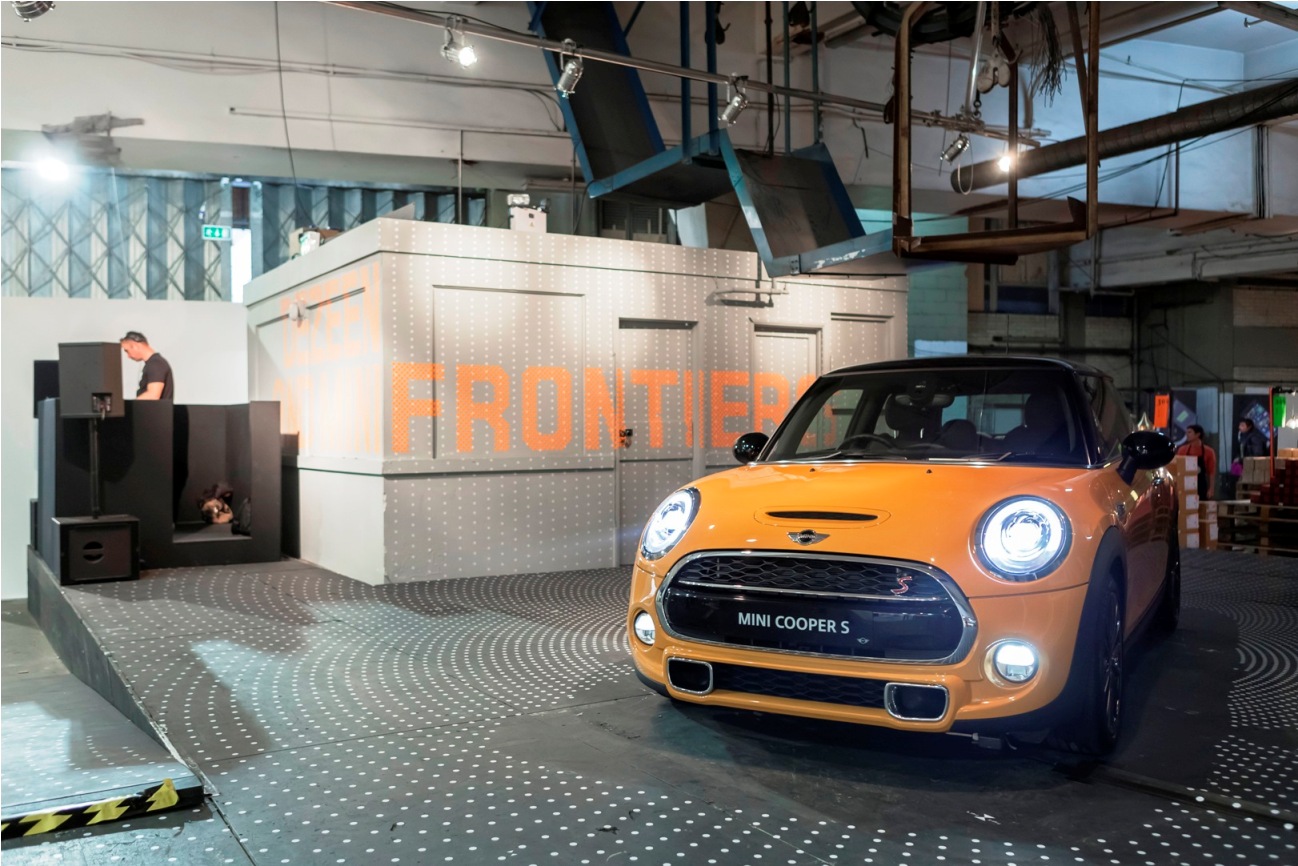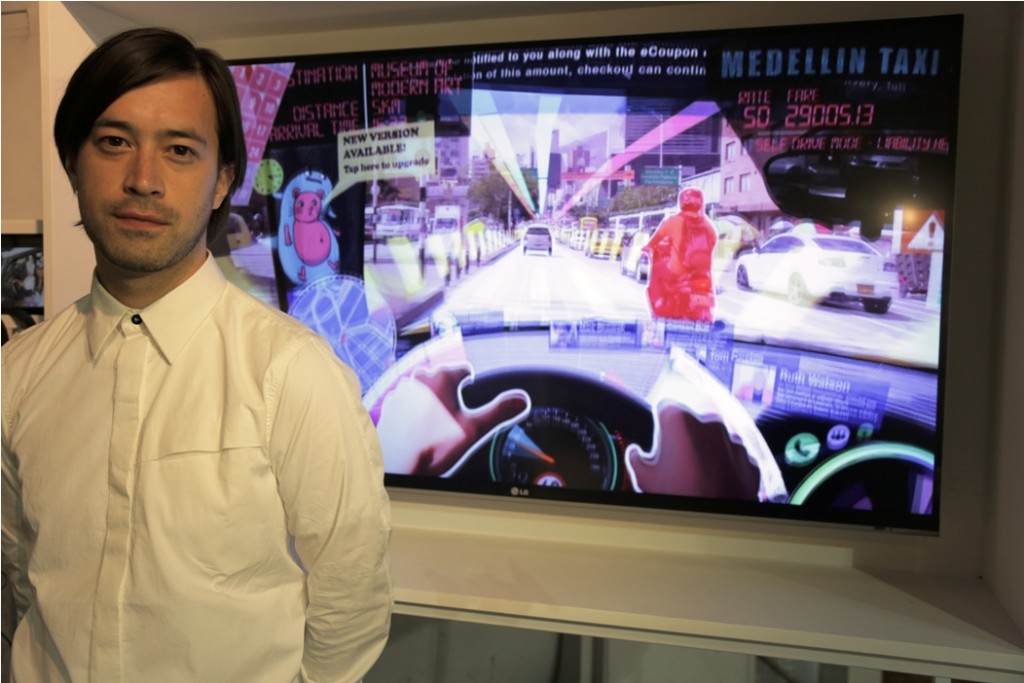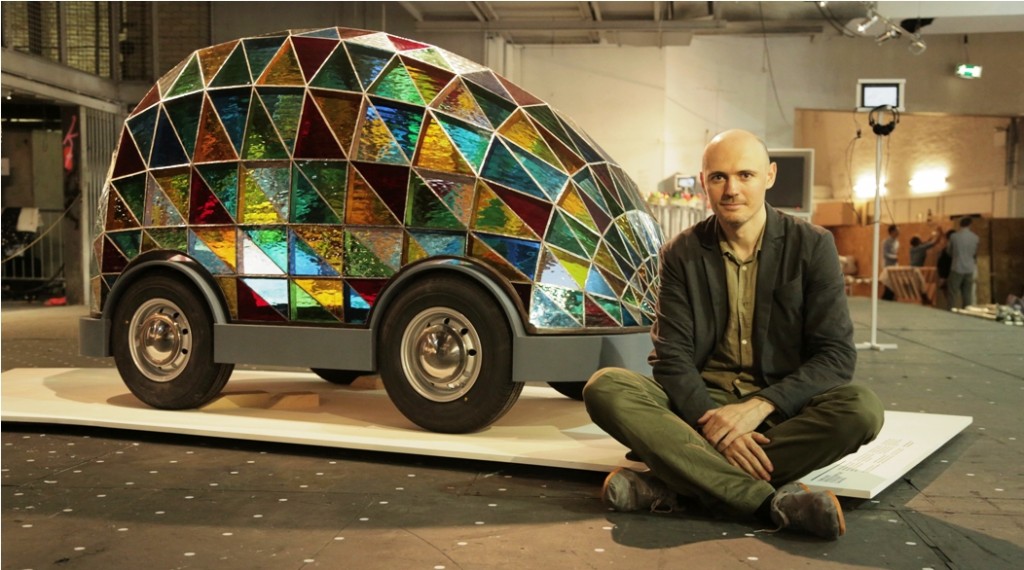Yesterday marks the opening of ‘Dezeen and MINI Frontiers: The Future of Mobility’, an exhibition at designjunction, London, which explores how design, technology and science are coming together to shape the future of travel. Visitors to designjunction, a flagship venue at London Design Festival (13 – 21 September), will see six of the UK’s most progressive designers come together to celebrate a collaboration between MINI and the online design magazine, Dezeen. The designers include Pernilla Ohrstedt, Matthew Plummer-Fernandez, Dominic Wilcox, Alexandra Daisy Ginsberg, Lucy McRae and Keiichi Matsuda.
The designers come from a variety of disciplines, including performance arts, biology, architecture and film making – but whether it is a stained-glass car or a vacuum-packing installation, each designer has taken design inspiration from the new MINI 3-Door.
Cars of the future to behave like living organisms
Daisy Ginsberg combines design with synthetic biology. Her belief is that car manufacturers will increasingly use natural or genetically modified materials in car design. “They already use natural plastics like chitin”, she says. According to Ginsberg’s research, cars of the future could be just like living organisms, mutating to suit the requirements of the driver and adapting to the surrounding environment.
World’s first stained-glass car, with a bed inside
Inventor Dominic Wilcox takes the safety guarantee of driver-less cars and demonstrates the scope for creative car design. As such, Wilcox has made a car entirely of stained glass, inspired by the windows of Durham Cathedral. As glass becomes increasingly ubiquitous in technology, Wilcox’s work implies that the cars of the future could even become entirely responsive vehicles.
Cars digitally personalized with augmented reality
Designer Keiichi Matsuda showcases a short film which shows the possibilities of augmented reality in the future, including how digital traffic information and road signs, which are personal to each driver, could be super-imposed onto cars. With augmented reality apps currently in use and the intelligent contact lens already in development, Matsuda’s future is not far away.
Vacuum-packing installation prepares people for space travel
Lucy McRae is a body architect who has trained in classical ballet and interior design. Her installation piece is a speculative vacuum chamber in which participants’ bodies are prepared for space travel. McRae’s idea is based upon the knowledge that astronauts can suffer from osteoporosis, a symptom of zero gravity environments. As space travel is sure to become more commonplace over the coming century, her design aims to contend with this issue.
Travelling virtually to new places
Pernilla Ohrstedt focuses her research on 3D mapping of cities. She believes that with technology already being used by Google Maps, people will be able to map whole cities with up-to-date 3D images and therefore travel virtually through these destinations, rather than visiting them in person. Ohrstedt has also designed the exhibition space at designjunction, in partnership with ScanLab, and her design is incorporated within it.
Super-intelligent ‘bobblehead’ that personalizes driving
Matthew Plummer-Fernandez has imagined and designed the first interactive bobblehead. His concept is inspired by the commonplace dashboard figurines which, in the future, could become a driver’s intelligent companion: they can be connected to the car’s GPS, can offer tips to the driver according to driving style and speed, and can act as speakers for a hands-free phones. These ‘bobbleheads’ can store the information and be transported to a different vehicle, thus ensuring that every driving experience is bespoke.
Visit the Dezeen and MINI Frontiers exhibition at designjunction, The Sorting Office, 21 – 23 New Oxford Street 18 – 21 September 2014. Tickets are £8 in advance and available from £10 on the door.






































